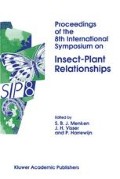Abstract
The functions of phytoecdysteroids remain enigmatic. The favoured hypothesis is that they reduce the extent of invertebrate predation on plants containing them, but definitive evidence for this is currently lacking (Lafont et al., 1991). This is largely because there is presently no significantly detailed body of information about the identity and developmental titres of phytoecdysteroids for any one species of plant or any group of closely related species. One of the most effective ways of testing this hypothesis would be to establish from a normally phytoecdysteroid-containing plant species genetically stable lines with elevated or reduced phytoecdysteroid levels and to assess their relative susceptiblity to insect predation. However, prior to achieving this long-term goal, it would be necessary to identify an experimentally suitable species and ascertain as much as possible about the nature and distribution of phytoecdysteroids within the plants.
Access this chapter
Tax calculation will be finalised at checkout
Purchases are for personal use only
References
Browse, J., P. McCourt & C.R. Sommerville (1985). A mutant of Arabidopsis lacking a chloroplast-specific lipid. Science 227: 763–765.
Dinan, L. (1992). The association of phytoecdysteroids with flowering in fat hen, Chenopodium album,and other members of the Chenopodiaceae. Experientia (in press).
Dinan, L., S. Riseborough, M. Brading, C.Y. Clement, D.J. Witts, J. Smith, S. Colombe, V. Pettitt, D.A. Wheeler & D.R. Greenwood (1991). Phytoecdysteroids in the Chenopodiaceae (Goosefoots). In: I. Hrdý (ed.), Insect Chemical Ecology, pp. 215–220. Prague: Academia and The Hague: SPB Academic Publ.
Lafont, R., A. Bouthier & I.D. Wilson (1991). Phytoecdysteroids: structures occurrence, biosynthesis and possible ecological significance. In: I. Hrdý (ed.), Insect Chemical Ecology, pp.197–214. Prague: Academia and The Hague: SPB Academic Publ.
Author information
Authors and Affiliations
Editor information
Editors and Affiliations
Rights and permissions
Copyright information
© 1992 Springer Science+Business Media Dordrecht
About this paper
Cite this paper
Dinan, L. (1992). Phytoecdysteroids and insect-plant relationships in the Chenopodiaceae. In: Menken, S.B.J., Visser, J.H., Harrewijn, P. (eds) Proceedings of the 8th International Symposium on Insect-Plant Relationships. Series Entomologica, vol 49. Springer, Dordrecht. https://doi.org/10.1007/978-94-011-1654-1_26
Download citation
DOI: https://doi.org/10.1007/978-94-011-1654-1_26
Publisher Name: Springer, Dordrecht
Print ISBN: 978-94-010-4723-4
Online ISBN: 978-94-011-1654-1
eBook Packages: Springer Book Archive

